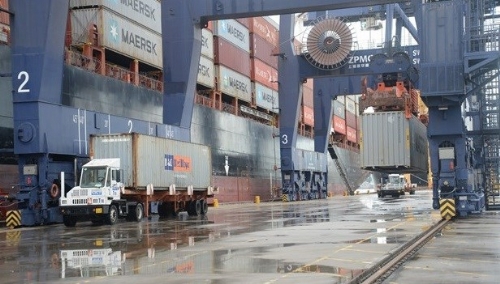Tourism Statistics Report: Achievements Still Exaggerated
Monday, June 1, 2015 23:06

Mr Nguyen Van Tuan, General Director of Vietnam National Administration of Tourism (VNAT), cited a northern province with relatively good tourism development for exaggeration of achievements. He said this province reported that it served 4.8 million tourists, with individual stay time of 2.7 days, while hotels and accommodation establishments reported to serve some 14,000 customers in the same period.
The above data show that, obviously, the results are inaccurate. If accommodation facilities had run at full capacity, it would have been able to serve only nearly half of the tourist arrivals boasted by that province. Meanwhile, these facilities reported that their room occupancy rate was just 55 percent.
Overstatement is quite common in tourism reports. It is time to have an approach and a methodology to accurately count international and domestic tourists, spending of each group of tourists, total tourism revenue, and other revenues. A correct statistical method will produce correct data - the foundation for making right development plans and strategies relative to potential and reality of each region and the entire country.
“Tourism statistics are important to determine tourism contributions to the national economy and serve industry management and policy-making," said Mr Tran Tri Dung, Deputy Director of Tourism Information Centre under VNAT, at a recent conference on tourism statistics reporting in Hanoi.
In the tourism sector, tourism statistics reporting is as accurate as possible. This activity will help assess tourism contributions to the economy, society and GDP to work out development forecasts and future investment requirements. However, statistical reporting seems to have a lot of problems. First of all, there are no consistent methods, formulas, approaches and methodologies. While international visitor arrivals to Vietnam are reported fairly accurately, other numbers are not really certain. Many localities have counted and reported, but results vary widely.
The Tourism Information Centre conducted research based on a document of the World Tourism Organisation called Tourism Satellite Account (TSA). Tourism Satellite Account provides statistical approach and methodology as well as survey methodology to produce relatively accurate reports. These methods are applicable to all members of the World Tour Programme.
Mr Tran Tri Dung said VNAT will organise training courses on statistical methods, recording methods, statistical indicators and formulas for all provinces and cities in the country in May and June 2015. The results collected will be used for regular tourism reports at the service of State tourism management, policymaking research, investment attraction and assessment of tourism roles in the economy.
On the results of polling international visitors in Vietnam in 2014, the Tourism Information Centre, which was assigned to perform this task by the Ministry of Culture, Sports and Tourism and VNAT, polled foreigners and Vietnamese people residing overseas visiting Vietnam via seven international border gates after they wrapped up their travel in Vietnam. The centre delivered 13,980 questionnaires in six languages to 1,000 travel agencies in 63 provincial/municipal Departments of Culture, Sports and Tourism. The survey was carried out from October to November 2014.
Thu Huyen
Other news
- Vietnam records trade surplus of nearly 4 billion USD in eight months(9/16/2022 10:51:43 AM)
- Vietnam reports trade surplus of nearly 4 billion USD in eight months(8/30/2022 3:55:09 PM)
- Agro-forestry-aquatic product exports rise over 13% in eight months(8/30/2022 3:50:51 PM)
- Trade surplus to hit 1 billion USD this year(8/24/2022 3:17:48 PM)
- Seafood exports expected to reach $3b in Q3(8/15/2022 9:58:47 AM)
- Vietnam eyes global top 10 in agricultural processing(8/12/2022 12:36:32 PM)
- Preliminary assessment of Vietnam international merchandise trade performance in the first half of July, 2022(8/10/2022 1:57:37 PM)
- Agro-forestry-fishery exports exceed 32 billion USD in first 7 months(8/10/2022 1:48:48 PM)
- Top five items with export earnings exceeding US$10 billion each(8/10/2022 1:41:28 PM)
- Industrial production index up 8.8% in first 7 months of 2022(8/8/2022 9:55:37 AM)






